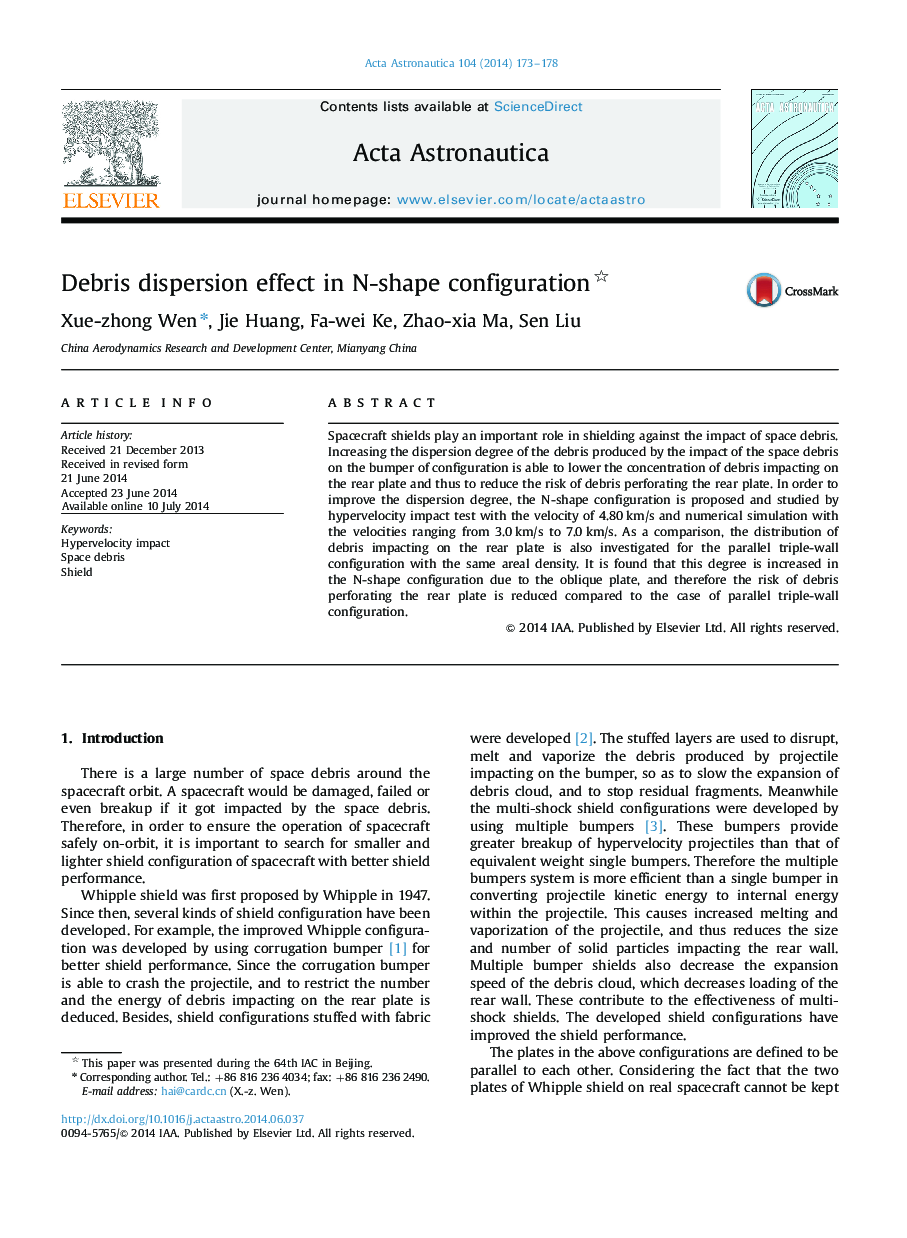| Article ID | Journal | Published Year | Pages | File Type |
|---|---|---|---|---|
| 10680781 | Acta Astronautica | 2014 | 6 Pages |
Abstract
Spacecraft shields play an important role in shielding against the impact of space debris. Increasing the dispersion degree of the debris produced by the impact of the space debris on the bumper of configuration is able to lower the concentration of debris impacting on the rear plate and thus to reduce the risk of debris perforating the rear plate. In order to improve the dispersion degree, the N-shape configuration is proposed and studied by hypervelocity impact test with the velocity of 4.80Â km/s and numerical simulation with the velocities ranging from 3.0Â km/s to 7.0Â km/s. As a comparison, the distribution of debris impacting on the rear plate is also investigated for the parallel triple-wall configuration with the same areal density. It is found that this degree is increased in the N-shape configuration due to the oblique plate, and therefore the risk of debris perforating the rear plate is reduced compared to the case of parallel triple-wall configuration.
Related Topics
Physical Sciences and Engineering
Engineering
Aerospace Engineering
Authors
Xue-zhong Wen, Jie Huang, Fa-wei Ke, Zhao-xia Ma, Sen Liu,
